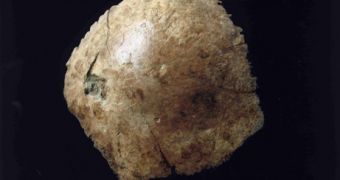Classical theory says Homo sapiens left Africa 50-60,000 years ago, entering Asia. But a new human skull, dated to be 80,000 to 100,000 years old, found in China, could rewrite the human evolution. The shattered fossil has been found in the Henan province, by a team led by Chinese archaeologist Li Zhanyang. While the Chinese report states that the fossil came from a modern human, experts are more tempted to say that the skull belongs to another species of Homo, most likely Homo erectus.
"While still too early to judge the skull's true significance, it hails from a pivotal evolutionary period, when modern-day humans began to supplant the ancestral human species Homo erectus. The discovery raises the chances that the two species may have overlapped for some time in China, possibly interbreeding and sharing tools," wrote the authors. "The skull shows characteristics of both archaic humans and of Homo sapiens," said Li, now working with Beijing's Institute of Vertebrate Paleontology and Paleoanthropology (IVPP) in order to remake the skull.
80 years ago, archaeologists found 500,000-year-old skulls of Homo erectus (baptized "Peking Man") in a large cave near Beijing. These Peking Men had migrated from Africa and spread throughout Asia and Europe. By those times, Chinese scientists hurried to say that they evolved in China into modern humans.
"The overwhelming weight of evidence from the fossil record and genetic testing worldwide points to the emergence of Homo sapiens in Africa alone. There was only one region, Africa, where a complete evolutionary sequence from Homo erectus to modern humans developed," Chris Stringer, a research leader in the Human Origins Program at the Natural History Museum in London, told National Geographic News.
"Based on genetic and migration studies, these modern humans began moving out across Eurasia at least 60,000 years ago and ultimately replaced all earlier species. If this is a Homo sapiens, with a high rounded skull, divided browridge, and chin, and is 80,000 to 100,000 years old, then it would indicate a very early dispersal of moderns eastwards from Africa and the Middle East," said Stringer.
"Based on the anatomy of the skull, with its large projecting browridge, this appears to be close to Peking Man," said Erik Trinkaus, a paleoanthropologist at Washington University in St. Louis, Missouri.
The skull could prove the co-existence in China of Homo erectus and Homo sapiens, just as Neaderthals (Homo neanderthaliensis) co-existed in Europe with Homo sapiens.
"These varying species might sometimes have interbred. The modern human fossils in Beijing feature archaic traits that might have marked it as an inter-human hybrid," said Trinkaus.
"If two or more branches of humans co-existed in China, a whole gamut of population interactions could have occurred, ranging from conflict to possible interbreeding," added Stringer.
"The record of stone technology could be interpreted to support a wide range of encounters between different human species. Homo erectus and Homo sapiens might have lived side by side and exchanged stone tool technology. On the other hand, with the development of increasingly sophisticated hand-axes and other stone blades, it's possible that one group of humans became stronger through better weapons technology," Hou Ya-mei, a professor at the IVPP who has studied fossil human stone tools from China, told National Geographic News.

 14 DAY TRIAL //
14 DAY TRIAL //